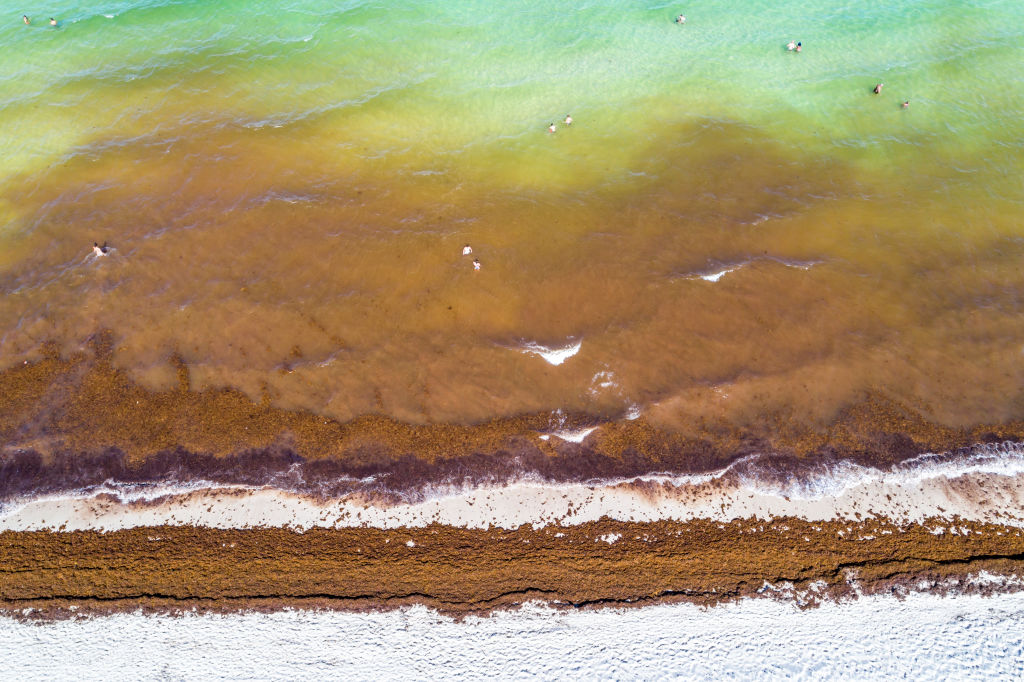Massive amounts of sargassum seaweed are returning to South Florida beaches from Miami to Fort Lauderdale.
Here's how the smelly seaweed can impact your beach-going experience this year.
Watch NBC6 free wherever you are
What is sargassum seaweed?
Sargassum is a buoyant, brown — and often, smelly — algae found abundantly in the ocean.
Get local news you need to know to start your day with NBC 6's News Headlines newsletter.
When you see the seaweed close up, you'll notice leafy appendages, branches, and round, berry-like structures. According to the National Oceanic and Atmospheric Administration, these gas-filled “berries," called pneumatocysts, are filled mostly with oxygen.
Pneumatocysts add buoyancy to the seaweed, allowing it to float on the surface, often in large clusters or "blobs" that can sometimes can stretch for miles across the ocean.
The large floating blobs of sargassum can provide food, refuge, and breeding grounds for an array of animals such as fishes, sea turtles, marine birds, crabs, shrimp, and more, NOAA says. Some animals, like the sargassum fish (in the frogfish family), live their whole lives only in this habitat.
When these clusters of sargassum make their way to the shoreline, it can create an unpleasant experience for beachgoers.
The smell from the sargassum has been likened to "rotten eggs," and as it decomposes in the hot sun, it can trigger respiratory problems — especially for those with conditions like asthma.
When sargassum loses its buoyancy, NOAA says it sinks to the seafloor, providing energy to organisms in the deep sea.
SARGASSUM SEAWEED
When will sargassum hit Florida beaches?
The summer is usually the height of the seaweed season, but this year it appears to be earlier.
As a massive blob of sargassum continues to grow at sea, several South Florida beaches are already seeing large clusters hitting the shoreline.
Aerial footage from Apr. 6 shows clusters of seaweed crowding beaches from Miami to Fort Lauderdale.
How will sargassum affect Florida beaches?
As the seaweed swirls out at sea, scientists have been predicting that it will have a major impact on the Florida shoreline this year.
Brian Barnes, an assistant professor at the University of South Florida, conducts research on sargassum seaweed blooms and said this year's "big blob" is only getting bigger.
"We’ve observed over the last several months that the bloom is getting bigger. It’s likely be as big as or if not bigger than the bloom that we saw last year," Barnes said.
Barnes said the trend of more seaweed has been growing since 2011.
A massive clump of the smelly seaweed has gained material early this year with changes in ocean currents, and is estimated to be about 5,500 miles long.
"Just the fact that there’s so much of it out there and it’s early in the cycle and we’re already seeing very big amounts relative to what we’ve seen in previous years, since there’s so much of it, the likelihood that there will be a beaching event that causes impacts just increases," Barnes said.
What are officials doing about it?
Mark Almy with the City of Fort Lauderdale said they've already had crews scooping up the slimy stuff in the past couple weeks.
"We have about 500 yards of seaweed we’ve taken off the beach so far as last year about this time it was 200," Almy said.
Most cities usually remove the stinky mess or dig it back into the sand, but Fort Lauderdale uses composting, bringing the mounds to a facility in Snyder Park.
"It's a trailer that is pulled behind a big tractor and it’s pulled with a conveyor on it and it grabs the seaweed and puts it in a hopper and then it’s shipped into a truck and brought down here to compost," Almy said.
It's environmentally friendly as the seaweed turns into dirt. It also saves the city a lot of cash.
"We don’t have any landfill space taking up and we don’t have to pay dumping fees so we save about $300,000 to $350,000 a year in just trucking fees," Almy said.



